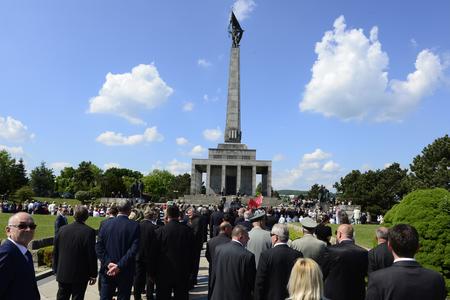“Just like a soldier on the front line,” said Boris Šramko, as he described what the seven-metre-high bronze statue of a soldier at the Slavín war memorial towering over Bratislava has had to face from the elements since it was unveiled in 1960.
 Lost in Bratislava? Impossible with this City Guide! (source: Spectacular Slovakia)
Lost in Bratislava? Impossible with this City Guide! (source: Spectacular Slovakia)
Speaking to journalists on July 10 as he outlined major restoration work which has started on the landmark, the director of Marianum, the municipal organisation which runs all civilian and military cemeteries in Bratislava, said experts had estimated the soldier had been hit many thousands times by lightning since it was unveiled in 1960.
The flag which the soldier holds in his right-hand has a lightning rod incorporated into it and the strikes have left the golden star on its upper end pock-marked and spotted.
But not for long.
The star, along with the rest of the soldier and the granite panelling of the column it stands on, is to be restored as part of complex reconstruction work – the first since the 1970s - of what is the largest war memorial in central Europe.
Slavín war memorial
unveiled in 1960 on the 15th anniversary of the liberation of Bratislava
final resting place of 6,845 Red Army soldiers who died during freeing the city from Nazi occupation
there are 278 individual graves and six mass graves
Built to mark the liberation of Bratislava and western Slovakia by the Soviet army at the end of WWII, Slavín is one of the Slovak capital’s most recognisable landmarks.
Almost 7,000 Soviet soldiers are buried there, and it has been visited by foreign leaders since it was opened, including in 2005 by Russian President Vladimir Putin.




 Slavín, largest war memorial in central Europe undergoing complex restoration. (source: Jana Liptáková)
Slavín, largest war memorial in central Europe undergoing complex restoration. (source: Jana Liptáková)